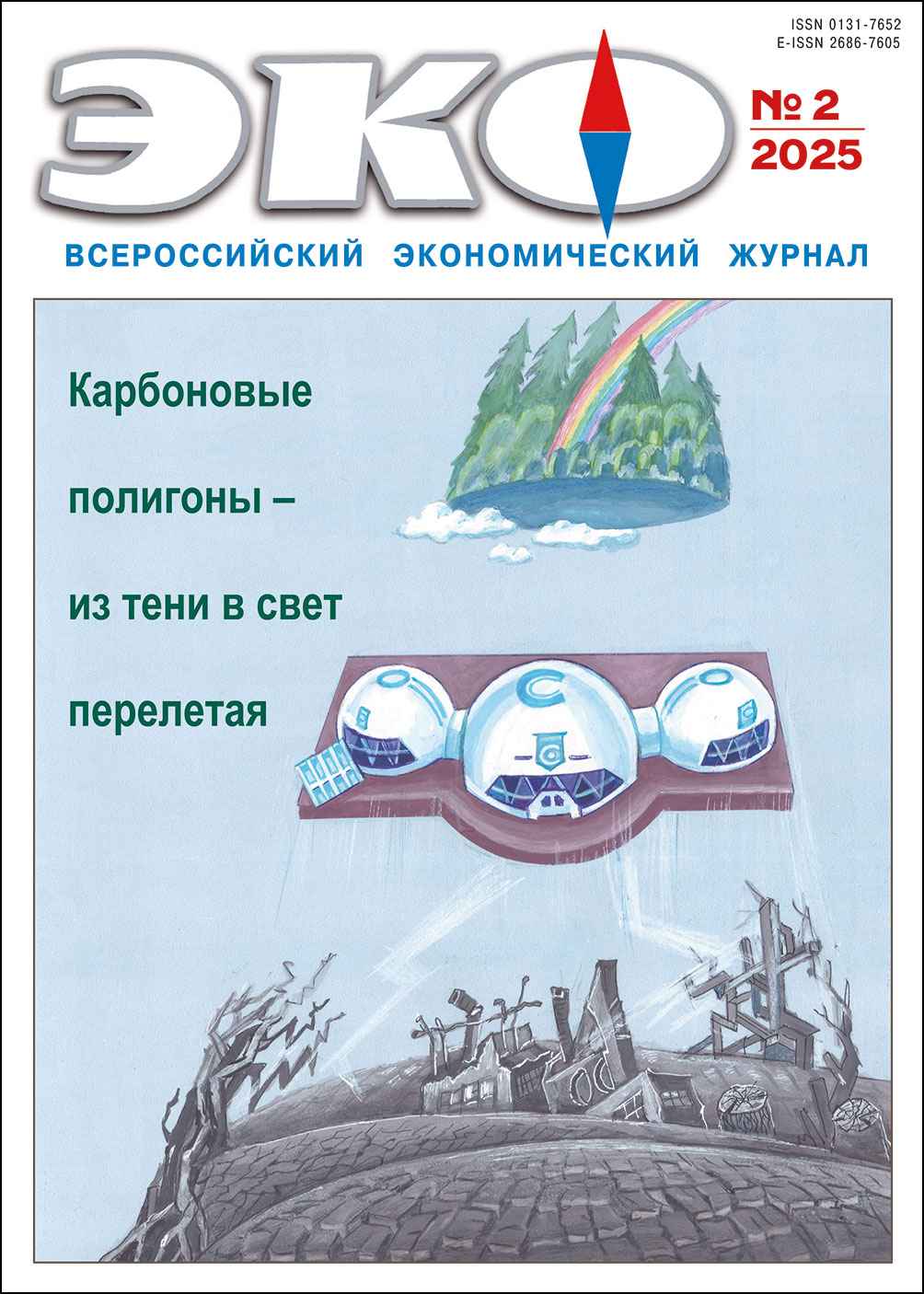ECONOMY SECTORS AND MARKETS
Public Procurement in Turbulent Times: Which Industrial Enterprises Received Public Procurement Contracts in 2019–2022?
Published 2025-04-02
Keywords
- public procurement; manufacturing industry; international sanctions; small business
How to Cite
1.
Rodionova Ю, Yakovlev А, Balaeva О. Public Procurement in Turbulent Times: Which Industrial Enterprises Received Public Procurement Contracts in 2019–2022?. ECO [Internet]. 2025 Apr. 2 [cited 2025 Nov. 29];55(2):128-40. Available from: https://ecotrends.ru/index.php/eco/article/view/4850
Abstract
This paper analyzes how the participation of enterprises in public procurement under 44-FZ and 223-FZ changed in the context of the shocks of 2019-2022. The results of a survey of industrial enterprises conducted by the HSE Institute for Industrial and Market Studies in 2022 showed that in 2019-2022, about 30% of medium and large firms in the manufacturing industry had public procurement contracts, 26-27% of small firms in 2019-2021, and 24% of small firms in 2022. The empirical analysis showed that the established channels of communication between the state and business retained their influence on firms' access to public procurement contracts, except for the factor of receiving financial or organizational support from the government. At the same time, for small enterprises, the main of these channels were the business associations, for medium and large enterprises – the state participation in ownership and the proximity to Moscow.References
- Ответ российского бизнеса на пандемию COVID-19 / Науч. ред.: Долгопятова Т.Г., Акиндинова Н.В., Симачев Ю.В., Яковлев А.А. М.: Издательский дом НИУ ВШЭ. 2021. 446 с. https://doi.org/10.17323/978–5–7598–2568–5
- Родионова Ю.Д., Яковлев А.А. Как изменился доступ к госзаказам для промышленных предприятий после кризиса 2014–2015 годов? // Журнал институциональных исследований). 2021. Т. 13. № 1. С. 95–114. https://doi.org/10.17835/2076–6297.2021.13.1.095–114
- Яковлев А.А., Говорун А.В. Бизнес-ассоциации как инструмент взаимодействия между правительством и предпринимателями: результаты эмпирического анализа // Журнал новой экономической ассоциации. 2011. № 9. С. 98–127.
- Baltrunaite, A. (2020). Political contributions and public procurement: evidence from Lithuania. Journal of the European Economic Association. Vol. 18, No. 2. Pp. 541–582. https://doi.org/10.1093/jeea/jvz016
- Cingano, F., Pinotti, P. (2013). Politicians at work: The private returns and social costs of political connections. Journal of the European Economic Association. Vol. 11, No. 2. Pp. 433–465. https://doi.org/10.1111/jeea.12001
- Duvanova, D. (2013). Building business in post-communist Russia, Eastern Europe, and Eurasia: Collective goods, selective incentives, and predatory states. Cambridge University Press. 267 p. https://doi.org/10.1017/CBO9781139343237
- Frye, T. (2002). Capture or exchange? Business lobbying in Russia. Europe-Asia Studies. Vol. 54, No. 7. Pp. 1017–1036. https://doi.org/10.1080/0966813022000017113
- Frye, T., Shleifer, A. (1997). The helping hand and the grabbing hand. American Economic Review. Vol. 14, No. 4. Pp. 354–358.
- Fu, J., Shimamoto, D., Todo, Y. (2017). Can firms with political connections borrow more than those without? Evidence from firm-level data for Indonesia. Journal of Asian Economics. Vol. 52, Pp. 45–55. https://doi.org/10.1016/j.asieco.2017.08.003
- Gnip, A.G. (2022). All you need is political love? Assessing the effects of partisan favouritism in Croatia’s public procurement. European Journal of Political Economy. Vol. 75, Pp. 102–170. https://doi.org/10.1016/j.ejpoleco.2021.102170
- Juurikkala, T., Lazareva, O. (2006). Lobbying at the local level: Social assets in Russian firms. Bank of Finland Institute for Economies in Transition Working Paper, No. 1. http://dx.doi.org/10.2139/ssrn.896908
- Mironov, M., Zhuravskaya, E. (2016). Corruption in procurement and the political cycle in tunneling: Evidence from financial transactions data. American Economic Journal: Economic Policy. Vol. 8, No. 2. Pp. 287–321. https://doi.org/10.1257/pol.20140188
- Slinko, I., Yakovlev, E., Zhuravskaya, E. (2005). Laws for Sale: Evidence from Russia. American Law and Economics Review. Vol. 7. Issue 1. Spring. Pp. 284–318. DOI: https://doi.org/10.1093/aler/ahi010
- Solanko, L. (2006). Coping with missing public infrastructure: An analysis of Russian industrial enterprises. BOFIT Discussion Paper. No. 2. http://dx.doi.org/10.2139/ssrn.1002603
- Szakonyi, D. (2018). Businesspeople in elected office: Identifying private benefits from firm-level returns. American Political Science Review. Vol. 112, No. 2. Pp. 322–338. https://doi.org/10.1017/S0003055417000600
- Titl, V., Geys, B. (2019). Political donations and the allocation of public procurement contracts. European Economic Review. Vol. 111, Pp. 443–458. https://doi.org/10.1016/j.euroecorev.2018.11.004
- Yakovlev, A., Ivanov, D. (2021). Friendly bureaucrats, formal rules and firms’ investment decisions: evidence from a survey experiment in Russia. International Journal of Emerging Markets. Vol. 16, No. 2. Pp. 347–369. https://doi.org/10.1108/IJOEM-08–2019–0667

